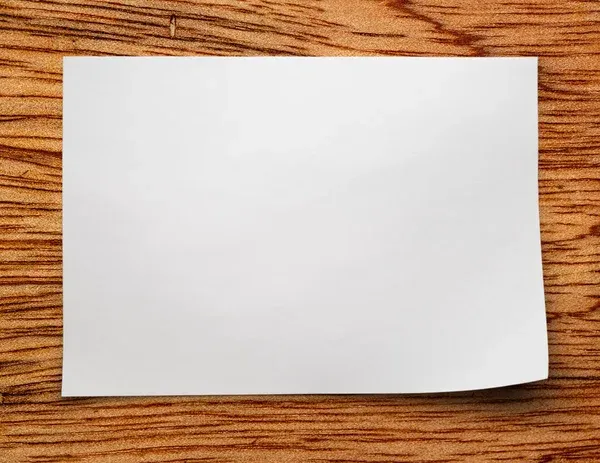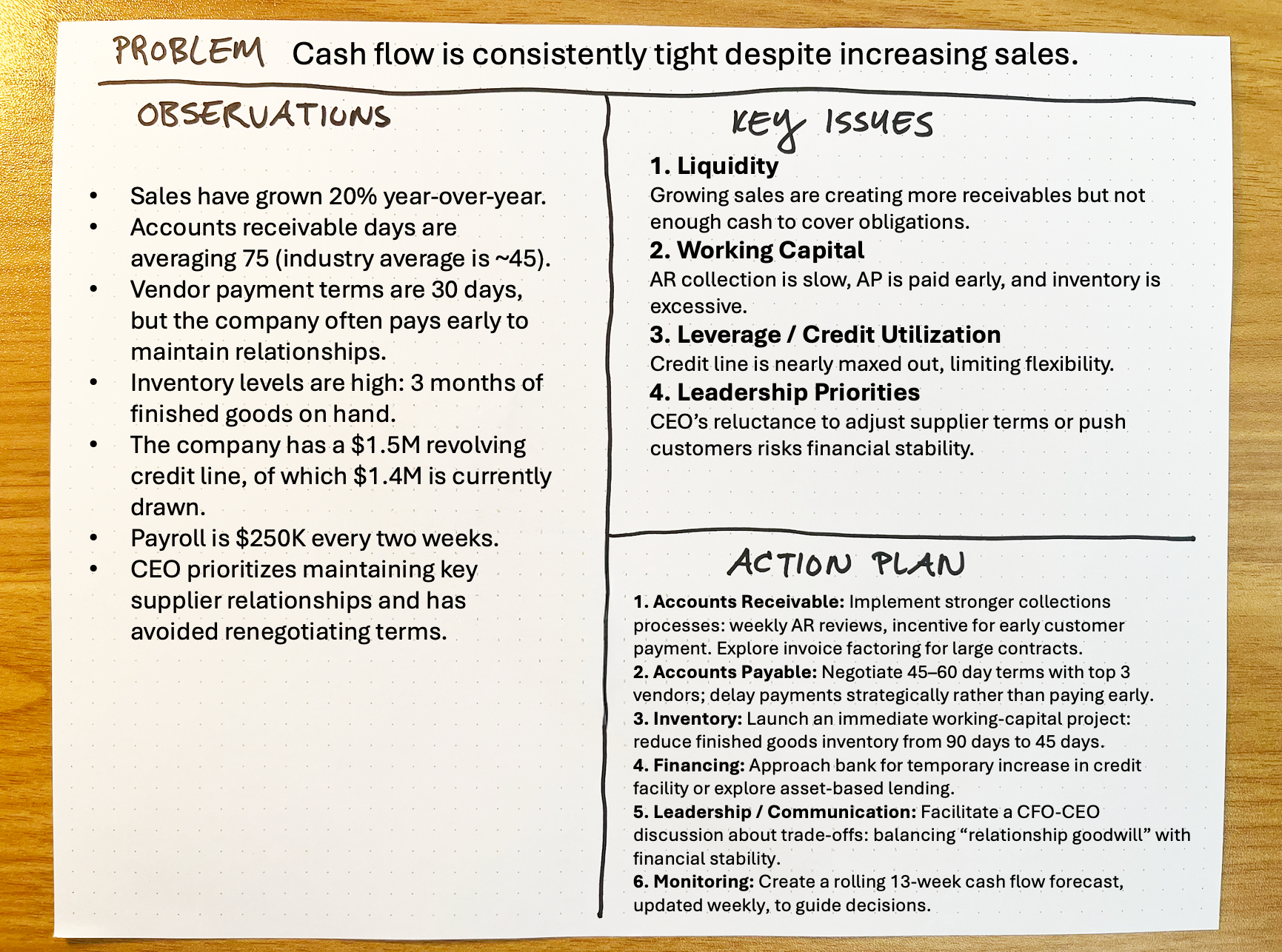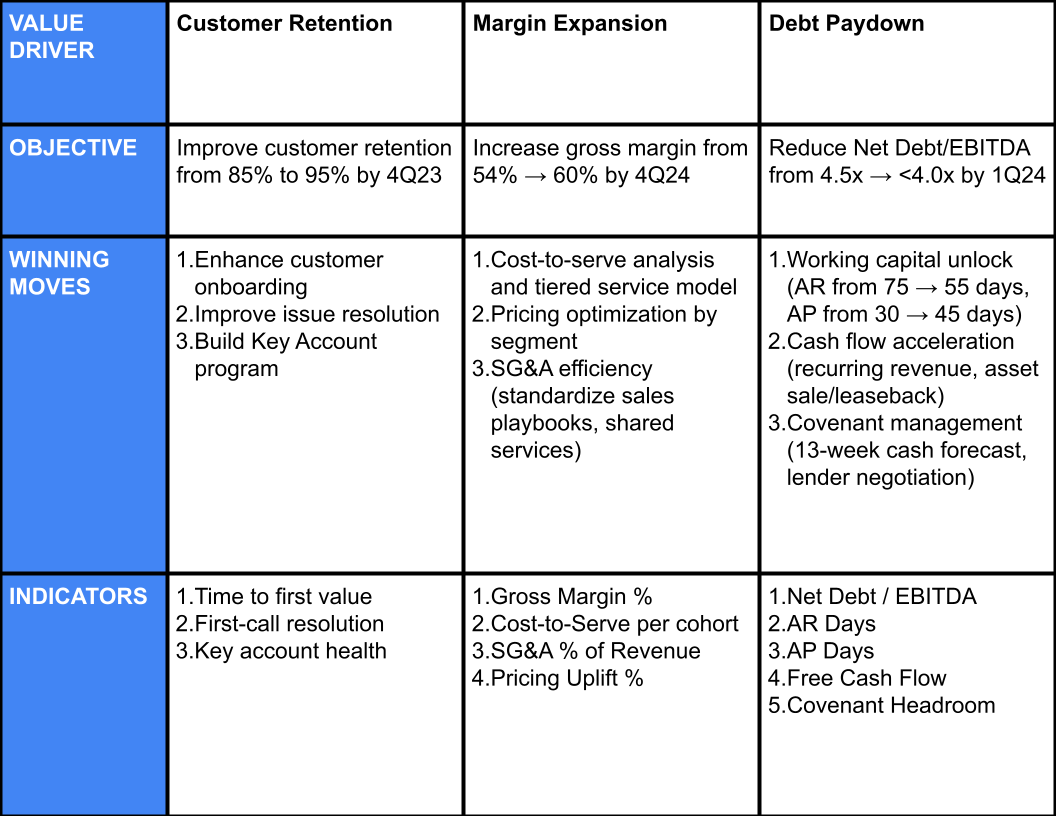The Best Tool In My Arsenal

It's not my macbook. It's not Chat GPT. It's an 8 1/2" by 11" sheet of paper.
Here's how I use a simple sheet of paper to ID key facts, organize information, and drive action in my work.

As you can see, I use a simple framework to keep thinking organized. Let's break down the elements:
- A Problem Statement forces us to scope down our focus to a particular solvable problem.
- An Observations section gives us room to list down important facts, datapoints, and things that we simply see, or things that that people have told us (relevant information can come from anywhere).
- We use the Key Issues section to make a framework that organizes the issues. The idea is to collapse the messy observations into neat buckets that capture the whole problem.
- The Action Plan is where we transform our observations and insights into actionable steps for execution.
Here's an example of the sheet being used to solve a cash flow problem for a mid-size manufacturing company:

The benefit of using paper is it makes thinking more concrete. The act of writing things out neatly tends to separate facts from their messy context, which makes ideas easier to organize. It's like a gear inspection in the Army: standardized layouts increase legibility, which aids communication. It's easy to slide a sheet of paper across a table and share your thinking, where you can validate or spot missing issues. Just like walking down a row of soldiers with standardized layouts make it very easy for for a drill sergeant to see what's missing or unready:

Dan Cremons, one of my favorite business writers and author of Winning Moves, is also a fan of one-page sheets of paper. Here's an example of how he uses a one-page plan to drive value creation in private equity:

In practice this framework would be condensed even further into a grid with 2-3 initiatives, making a handy reference sheeet. The one-page sheet aids focus. In practice you can only do a few things well each quarter. There's only so much room on one page of paper. You're forced to decide what's most important. It's better than a powerpoint deck because it's a lightweight tool for action.

The one-pager also becomes a touchstone artifact for the team. During recurring meetings it's easy for everyone to pull out their one-page sheets and "keypad" in on focus areas. This improves communication and gets everyone unambiguously aligned.
A recurring theme in my approach is how to bridge theory to execution. Thinking is better when a problem is reduced to essential elements, when it's tied to a measurable plan, and when it's concretized with an easily referenced physical object. The humble sheet of paper is a powerful tool for action.
At Blackpowder we help busy founders set up smoothly running finance stacks. Talk to us today at info@blackpowder.io to get started.